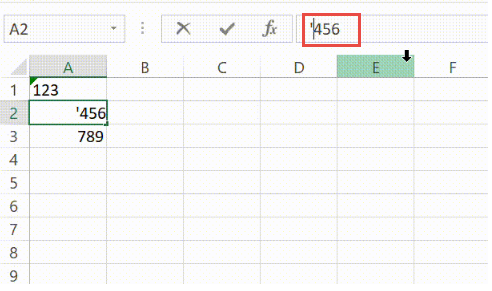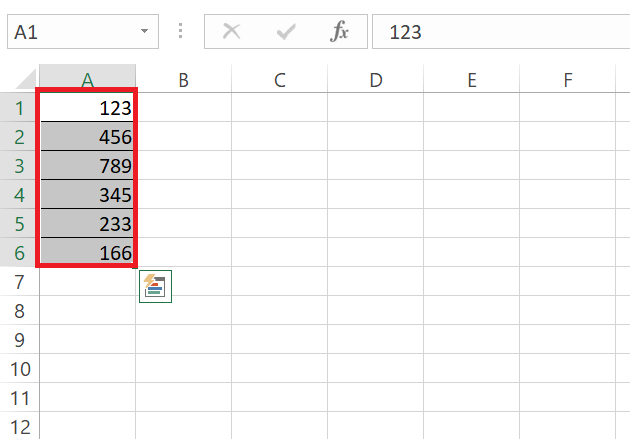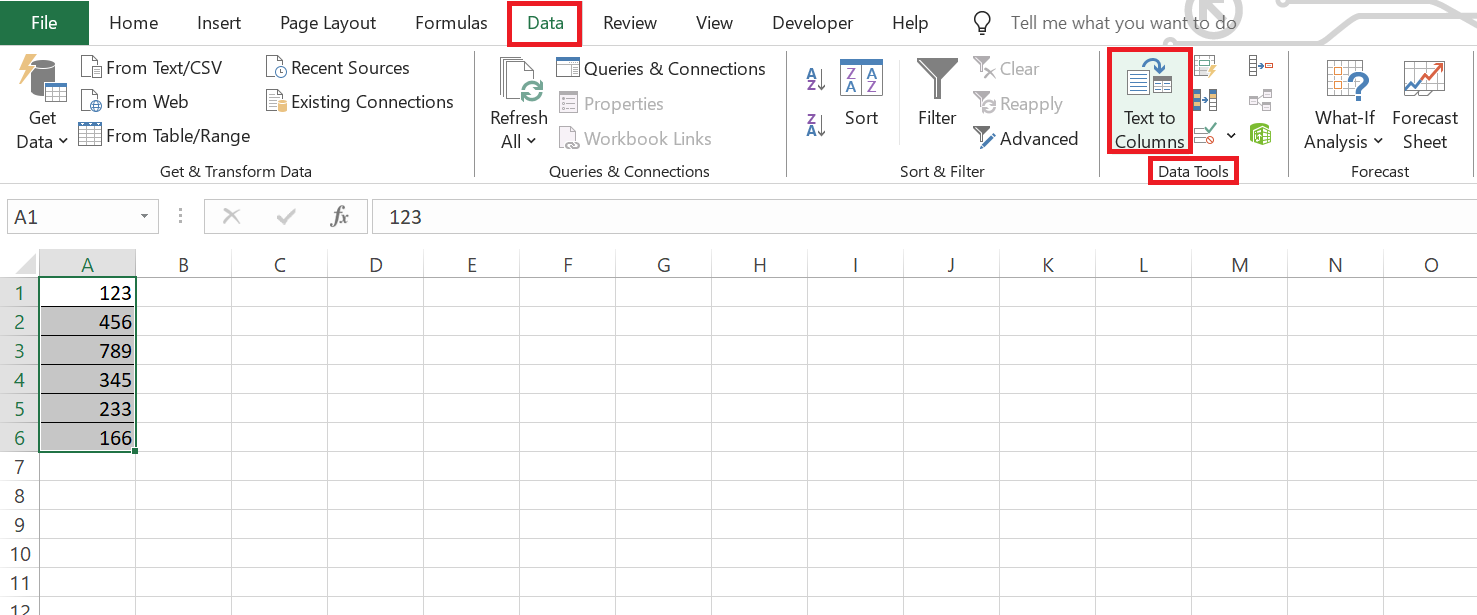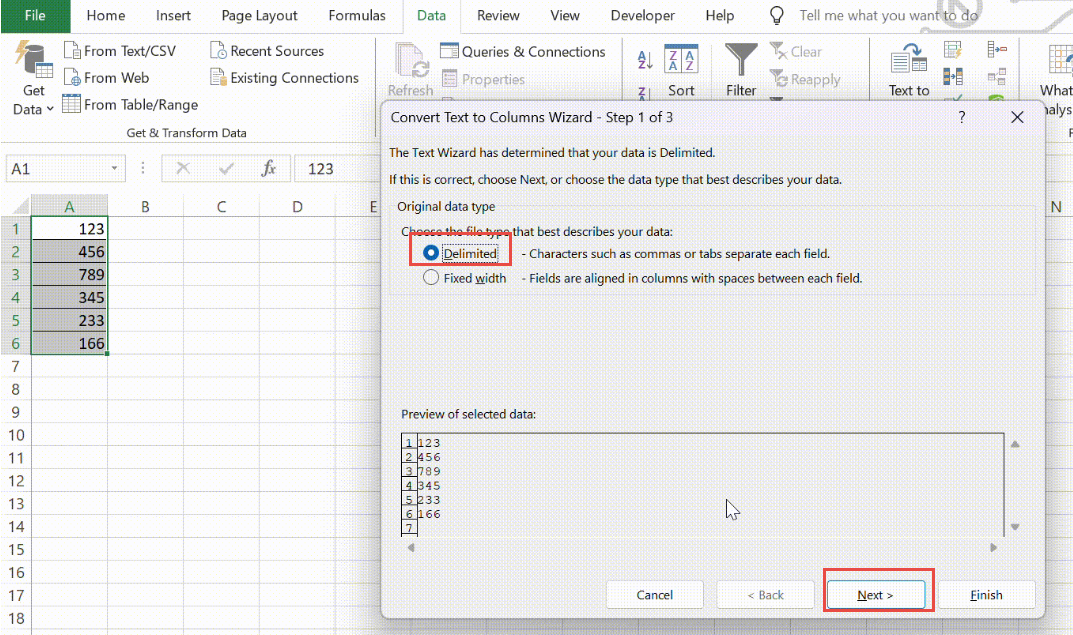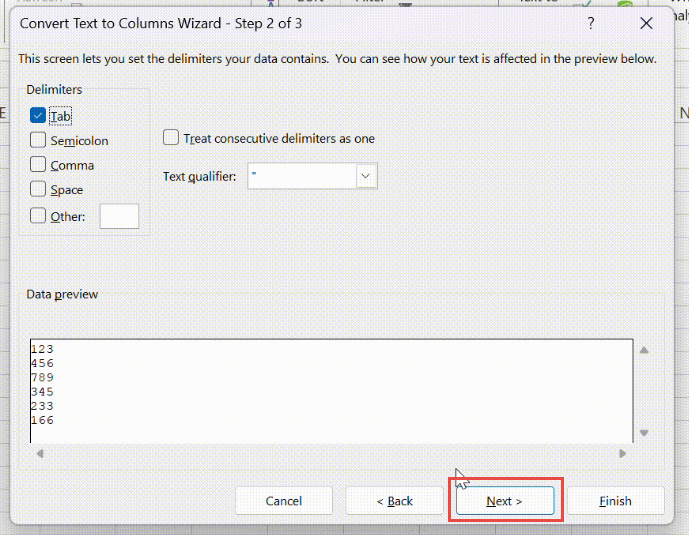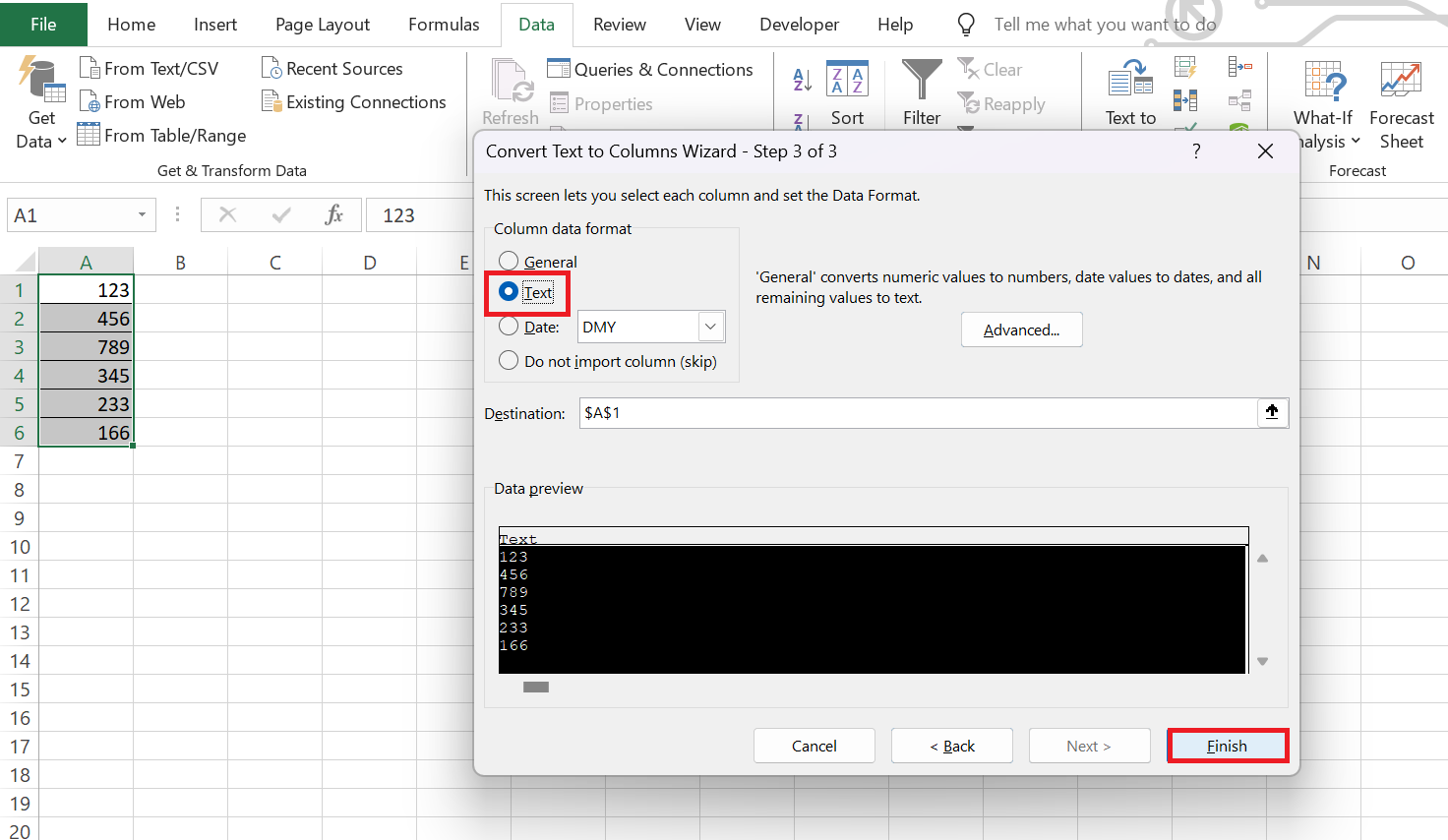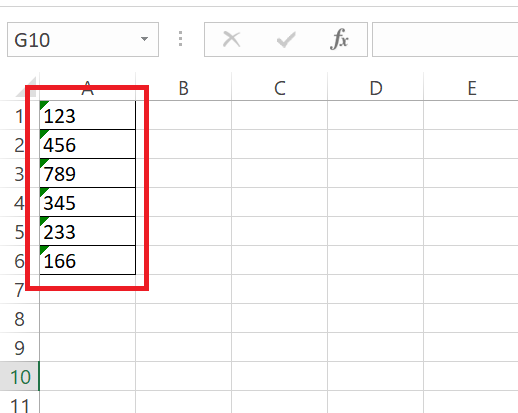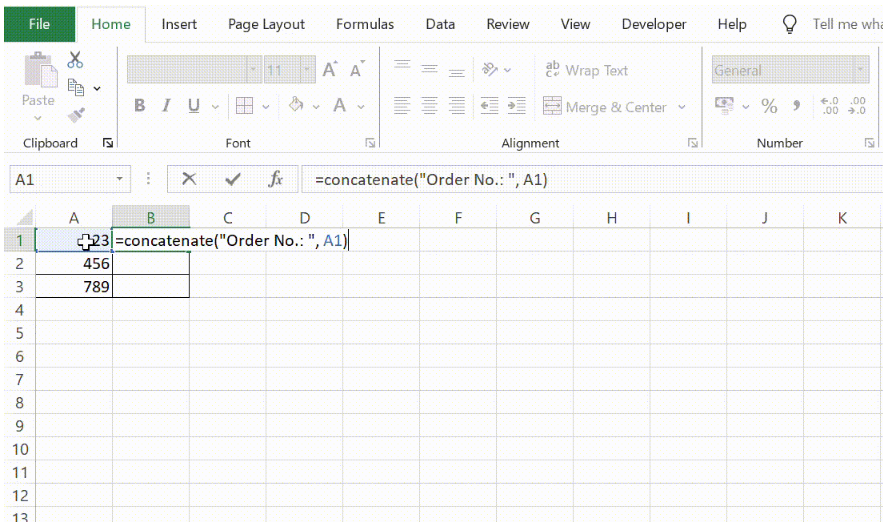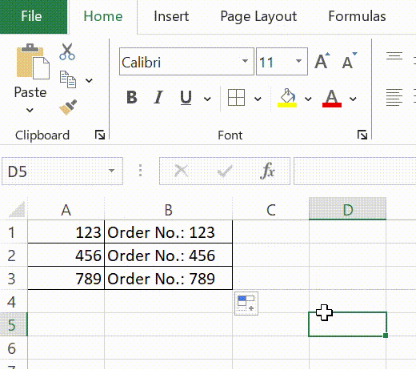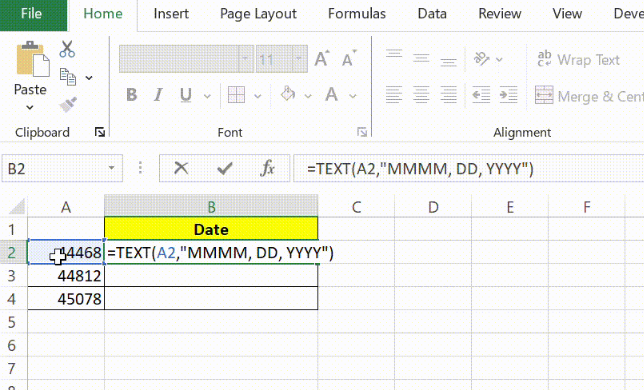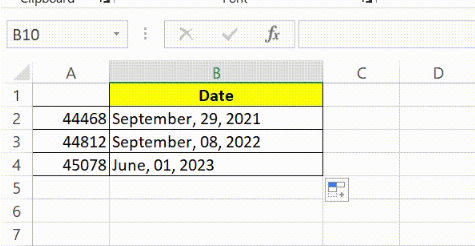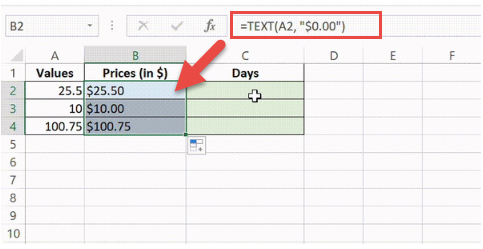In Microsoft Excel, precision matters, and understanding when to treat numbers as text is crucial for maintaining data integrity. Converting numbers to text is essential for preserving identifiers like product codes or phone numbers without alterations in format, ensuring clarity and precision in your documents. In this article, we will cover different methods to convert number to text in Excel.
Key Takeaways:
- Excel offers various methods to convert numbers to text, each tailored to different data types and objectives, ensuring flexibility and efficiency in data management.
- Techniques like adding an apostrophe or using the Text to Columns feature provide quick solutions for converting numbers to text, suitable for small-scale conversions.
- Formulas like CONCATENATE and the TEXT function offer more advanced options for merging numbers with text and customizing text formats, enabling precise control over data presentation.
- The ‘Text to Columns’ wizard simplifies bulk conversions of numbers to text, preserving data integrity and preventing formatting errors, especially useful for large datasets.
Table of Contents
Introduction to Excel Data Conversion
Understanding the Need for Converting Numbers to Text
When working with Excel, precision is key, and that means understanding not only how to work with numbers but also when to treat those numbers like text. Numbers as text can be crucial for several reasons. For instance, they may serve as identifiers, like product codes or phone numbers, where you wouldn’t want Excel to alter their format – no rounding or dropping zeros. Converting all text strings that represent numbers ensures your document maintains its intended clarity and formality.
Moreover, while Excel is great at recognizing and processing numerical data, it can hit a snag with text-formatted numbers when you attempt calculations. They’re often left-aligned in their cells, an immediate visual clue that Excel sees them as text. By switching them to a number format, you dodge pesky errors and save time, allowing Excel to zip through calculations and functions seamlessly.
Imagine the confidence boost you’ll get from enhancing your Excel skills through mastering conversion processes. And think about the lasting professional impression you’ll make when presenting well-formatted data to colleagues.
Overview of Methods for Converting Excel Numbers to Text
When you delve into the toolbox Excel offers for data conversion, you’ll find a range of methods to transform numbers into text. Each method has its unique application based on your data’s nature and your objective. Here’s a quick overview:
- By Adding an Apostrophe: The simplest trick in the book—typing an apostrophe before a number—Excel then treats the number as text. It’s quick for a small amount of data.
Let’s see an example of how to treat numbers as text in Excel:
- Using Text to Columns: This feature, found under the Data menu, can convert numbers to text in bulk by splitting based on column data — especially handy for mixed-format data.
- Applying Concatenate Function: By using the CONCATENATE function or the ‘&’ symbol, you can merge a number with a text string, effectively changing the number to text.
- Employing Excel Functions: Functions like TEXT can customize number formatting, turning them into text with the format you specify, such as dates or currencies.
These approaches range from a one-click solution to more intricate methods requiring a few more steps and understanding of Excel functions. Depending on the context—like maintaining leading zeros in product codes or converting a large dataset—selecting the right method is pivotal for an efficient workflow.
Navigating these conversion techniques will become second nature as you get to grips with them, making you an Excel wizard in no time. Remember, your chosen method should strike a balance between ease of use and the desired outcome you wish for your Excel masterpiece.
Step-by-Step Conversion Techniques
Using the ‘Text to Columns’ Wizard for Basic Conversion
The ‘Text to Columns’ wizard is a versatile tool that comes in handy for converting a series of numbers into text quickly and effectively. Here’s a simple guide for those occasions when your dataset doesn’t require complex manipulations and a straightforward change in format will do the trick:
STEP 1: Select Your Data: Click on the column or specific cells within a single column that you want to convert—keep in mind that ‘Text to Columns’ works on one column at a time.
STEP 2: Launch the Wizard: Navigate to the ‘Data’ tab, find the ‘Data Tools’ group, and click on ‘Text to Columns’. This action opens up the wizard that’ll guide you through the conversion process.
STEP 3: Choose Data Type: In the wizard, select the ‘Delimited’ option when moving to the next phase (if your data isn’t split by comma, tab, or other separators, then none of the delimiters need be selected), and hit ‘Next’.
STEP 4: Set Column Data Format: Skip to the step in the wizard where you’re prompted to choose the column data format. Pick ‘Text’ so Excel knows what you’re aiming for.
STEP 5: Complete The Conversion: Once you have tweaked all settings to fit your needs, clicking ‘Finish’ will execute the conversion, and voila — your numbers transform into text, right before your eyes!
The beauty of this method is its simplicity and speed, making it a go-to technique for quick conversions that don’t require any fancy formatting or manipulation. It’s incredibly useful when you want to make sure that Excel treats your data exactly as you’ve entered it, such as zip codes and phone numbers that might otherwise get stripped of zeros or reformatted.
By mastering the ‘Text to Columns’ functionality, you can swiftly sidestep common data entry problems with the confidence that your numbers remain intact, just in a different costume.
Applying Formulas to Transform Numbers to Text
When you’re looking to not just convert but also maintain certain text characteristics or merge with additional text, formulas become your best allies in Excel. Here’s how you can wield these nifty functions to your advantage:
Concatenate to Merge: Fuse numbers with text by using the CONCATENATE() function or the ampersand (&) operator. For instance, =CONCATENATE("Order Number: ", A2) or ="Order Number: " & A2. This leaves your number nestled comfortably within a text field, perfect for listings and reports.
Find below showing steps to merge numbers with text using CONCATENATE():
Copy the formula to the entire column:
TEXT() Function Prowess: The real conversion powerhouse is the TEXT() function, which converts and formats numbers to text in one fell swoop. The syntax – =TEXT(value, "format code") – lets you define how your number shapes up as text. Want a date to look like “February 2, 2023”? Just use =TEXT(A2, "MMMM,DD,YYYY"), and you’re set.
Copy the formula to the entire column:
Customizing to Your Needs: Transform a price to display two decimal places or convert a date to show the day of the week. Custom text formats in the TEXT function provide a spectrum of possibilities.
Excel formulas give you a smooth ride when converting numbers to text, with the added benefit of tailored solutions right at your fingertips. Whether you’re looking to keep a consistent structure or add some textual flair to your numbers, formulas make it possible with minimal fuss and maximum
Frequently Asked Questions
How do I convert numbers to text in Excel automatically?
To convert numbers to text in Excel automatically, you can pre-format the target cells as ‘Text’ before entering data, or use the TEXT function. For example, =TEXT(A1, "0") will take the number in cell A1 and convert it to text. Additionally, the ‘Text to Columns’ wizard can be used for converting multiple cells quickly: select the cells, go to the ‘Data’ tab, click ‘Text to Columns’, and choose ‘Text’ in the final step of the wizard.
What is convert numbers to text in excel?
Converting numbers to text in Excel refers to the process of changing data from a numeric format, which Excel can perform calculations on, to a text string that Excel treats as words or characters. This is useful for preserving data such as ZIP codes or product IDs in their original form without changes or automatic formatting by Excel.
What are the reasons to convert numbers to text in Excel?
Converting numbers to text in Excel is often crucial for preserving leading zeros in identification numbers, ensuring alignment in tables, preventing unwanted automatic reformatting, and maintaining data accuracy when importing or exporting. It also allows alphanumeric data to be handled correctly without Excel interpreting them for calculations or altering their appearance.
How can I convert a large list of numbers to readable text?
To convert a large list of numbers to readable text in Excel, use the ‘Text to Columns’ wizard for bulk conversion without changing number formatting, or apply the TEXT function with the appropriate format codes for customized conversion. For instance, use =TEXT(A1, "0") for simple text conversion, or delve into more complex formatting tailored to the list’s context and requirements.
Why convert text to numbers in Excel?
Converting text to numbers in Excel is essential to perform numerical calculations and analyses since Excel only processes calculations with values recognized as numbers. It also allows you to use mathematical and statistical functions, sort or filter data numerically, and create charts or graphs that require quantitative data inputs. Converting aids in maintaining the consistency, accuracy, and functionality of your Excel datasheets.
John Michaloudis is a former accountant and finance analyst at General Electric, a Microsoft MVP since 2020, an Amazon #1 bestselling author of 4 Microsoft Excel books and teacher of Microsoft Excel & Office over at his flagship MyExcelOnline Academy Online Course.

